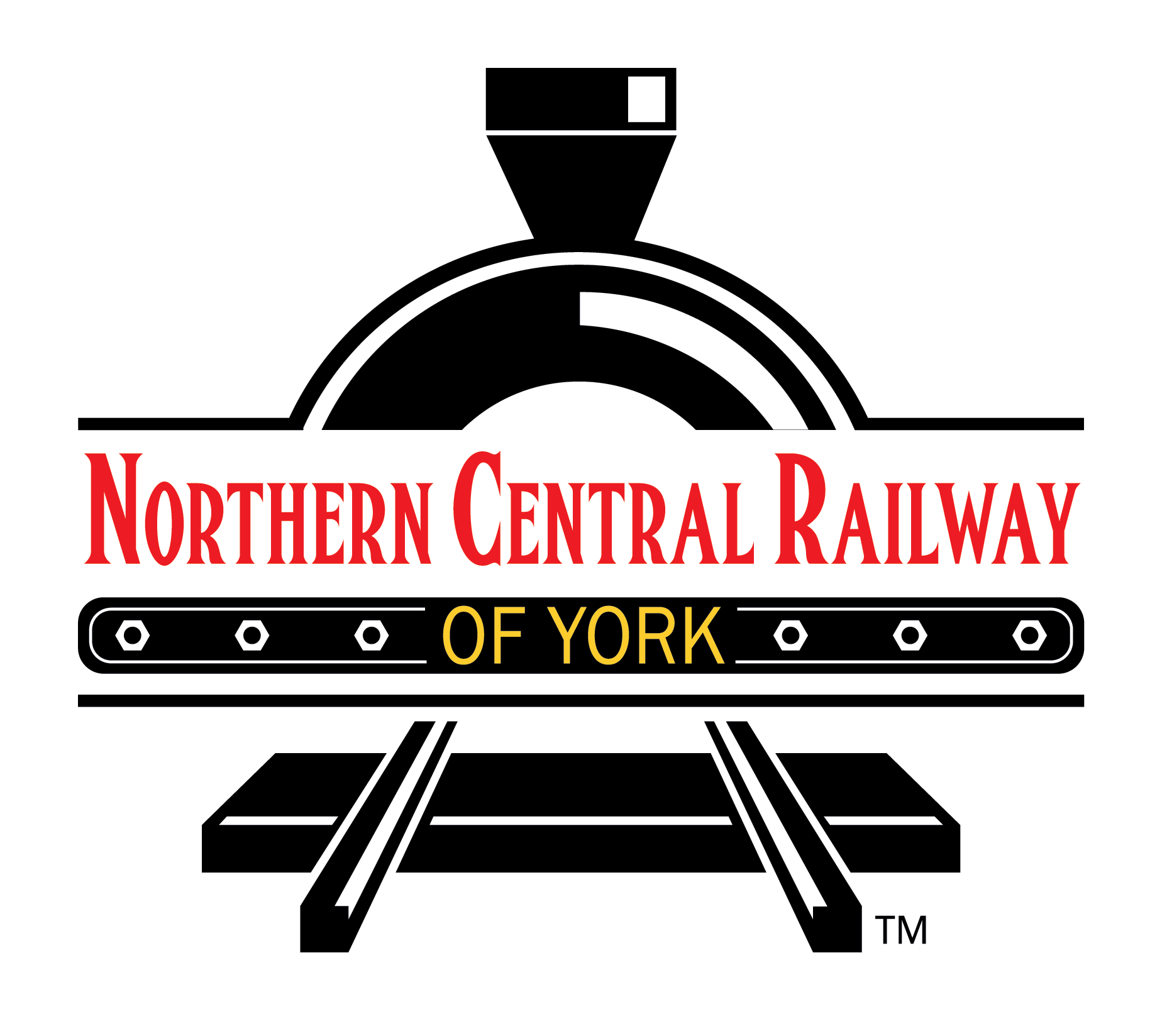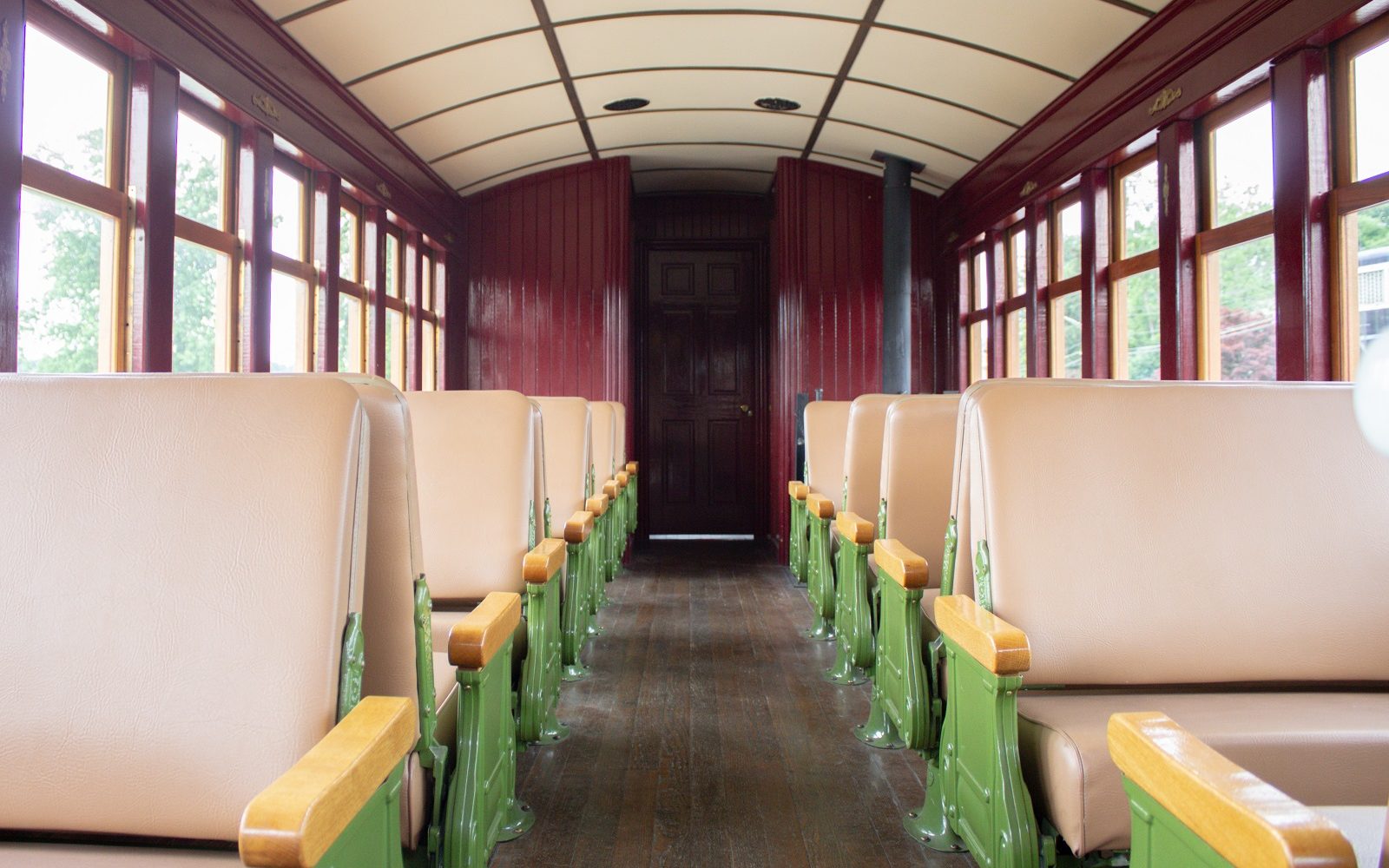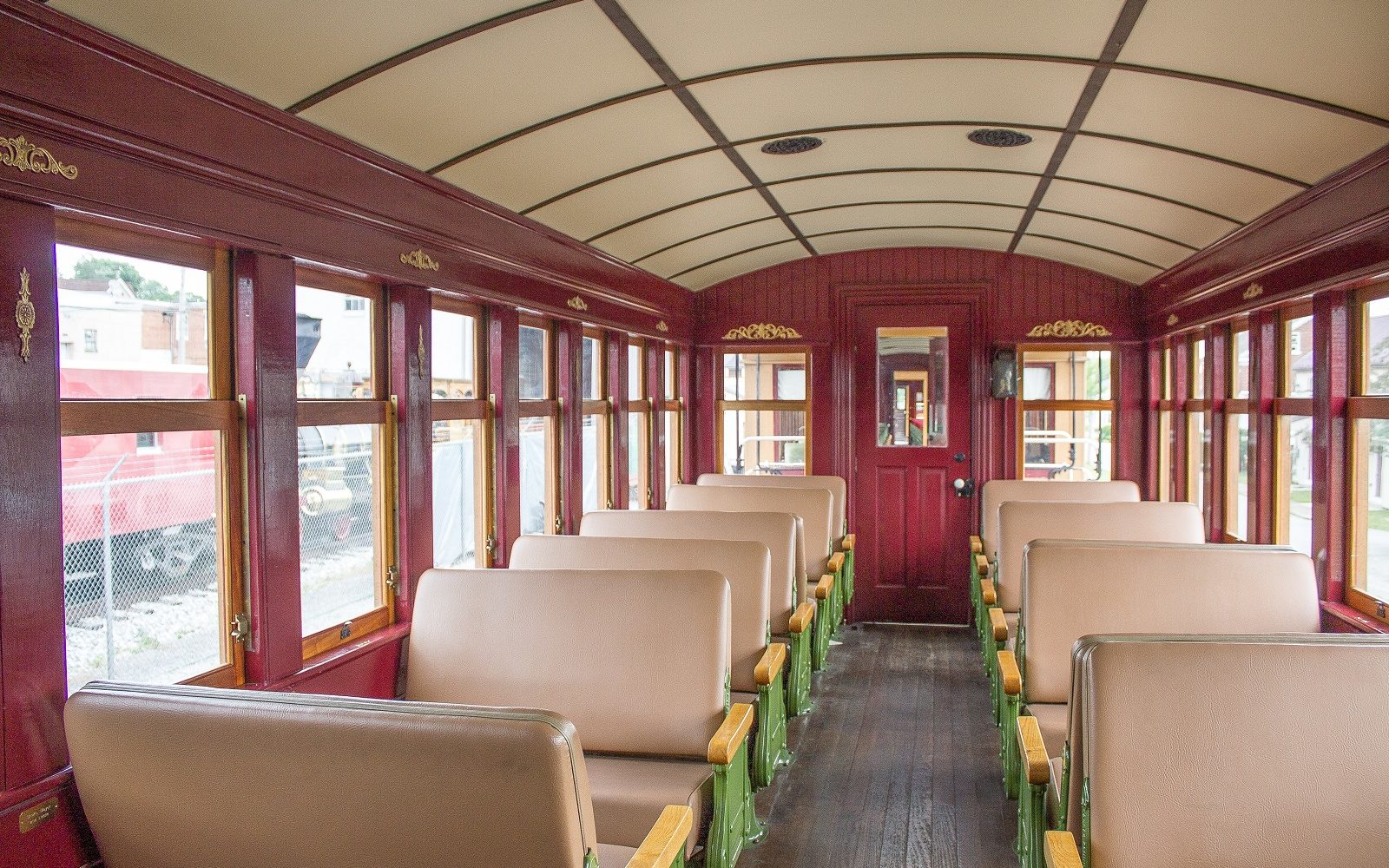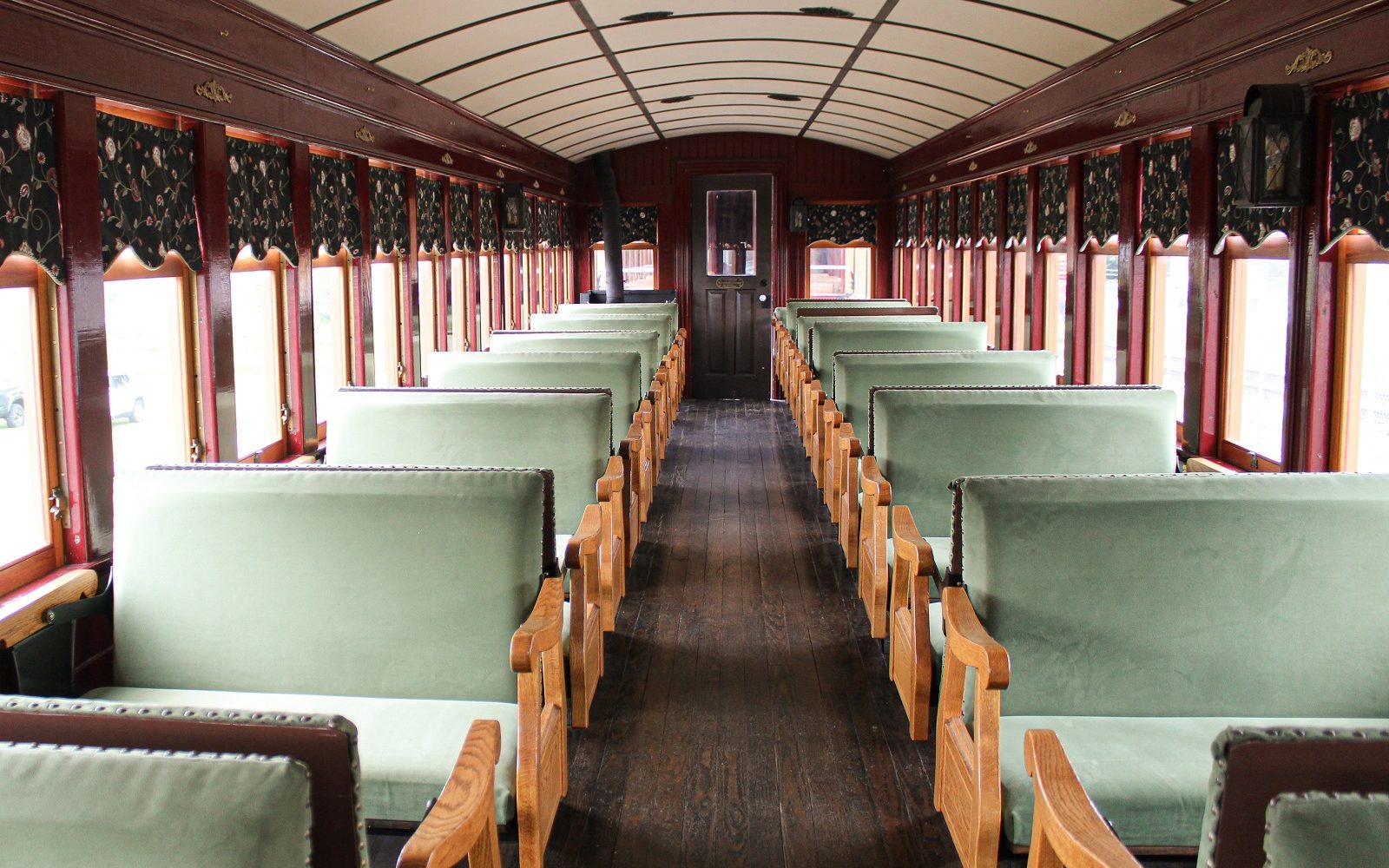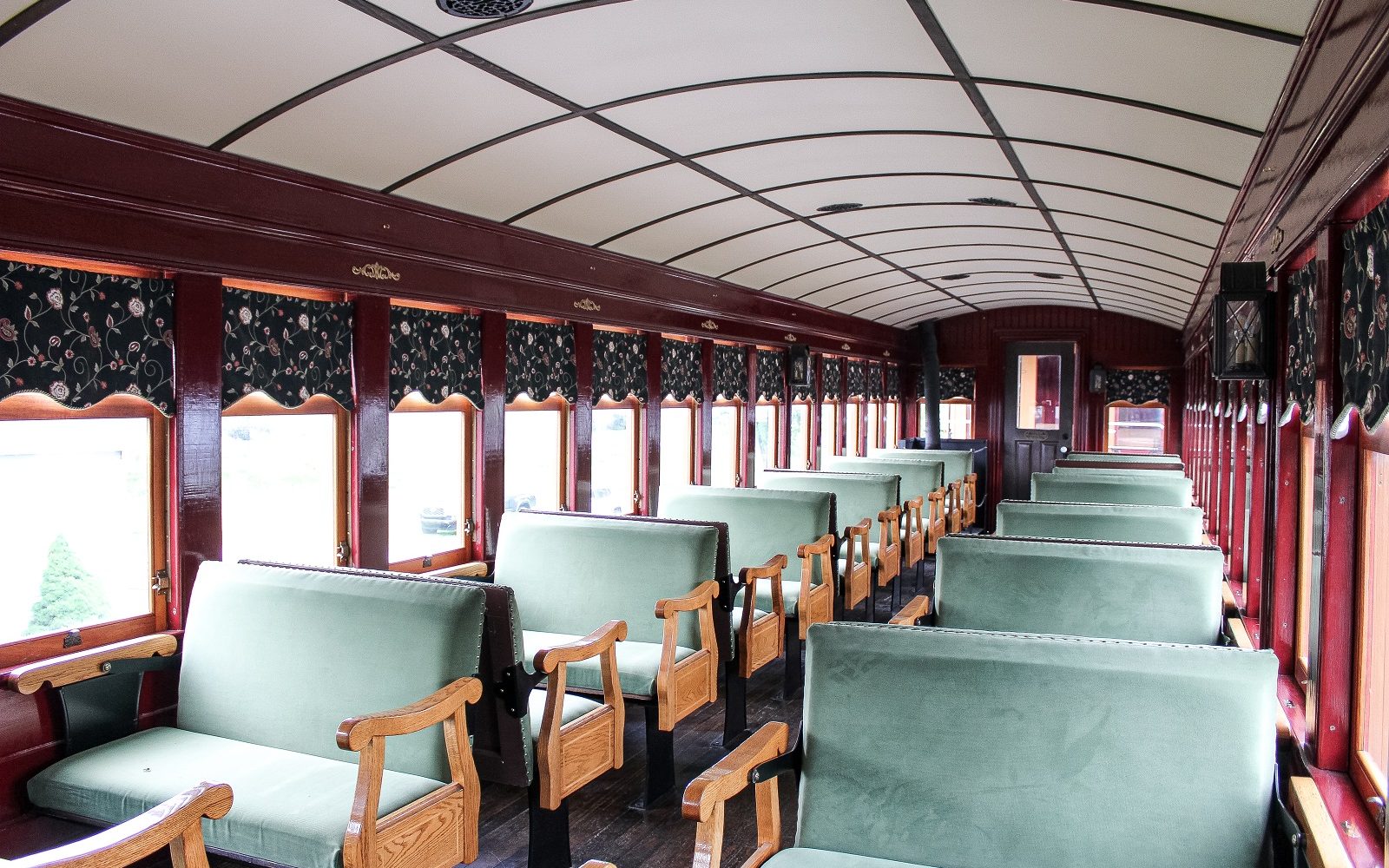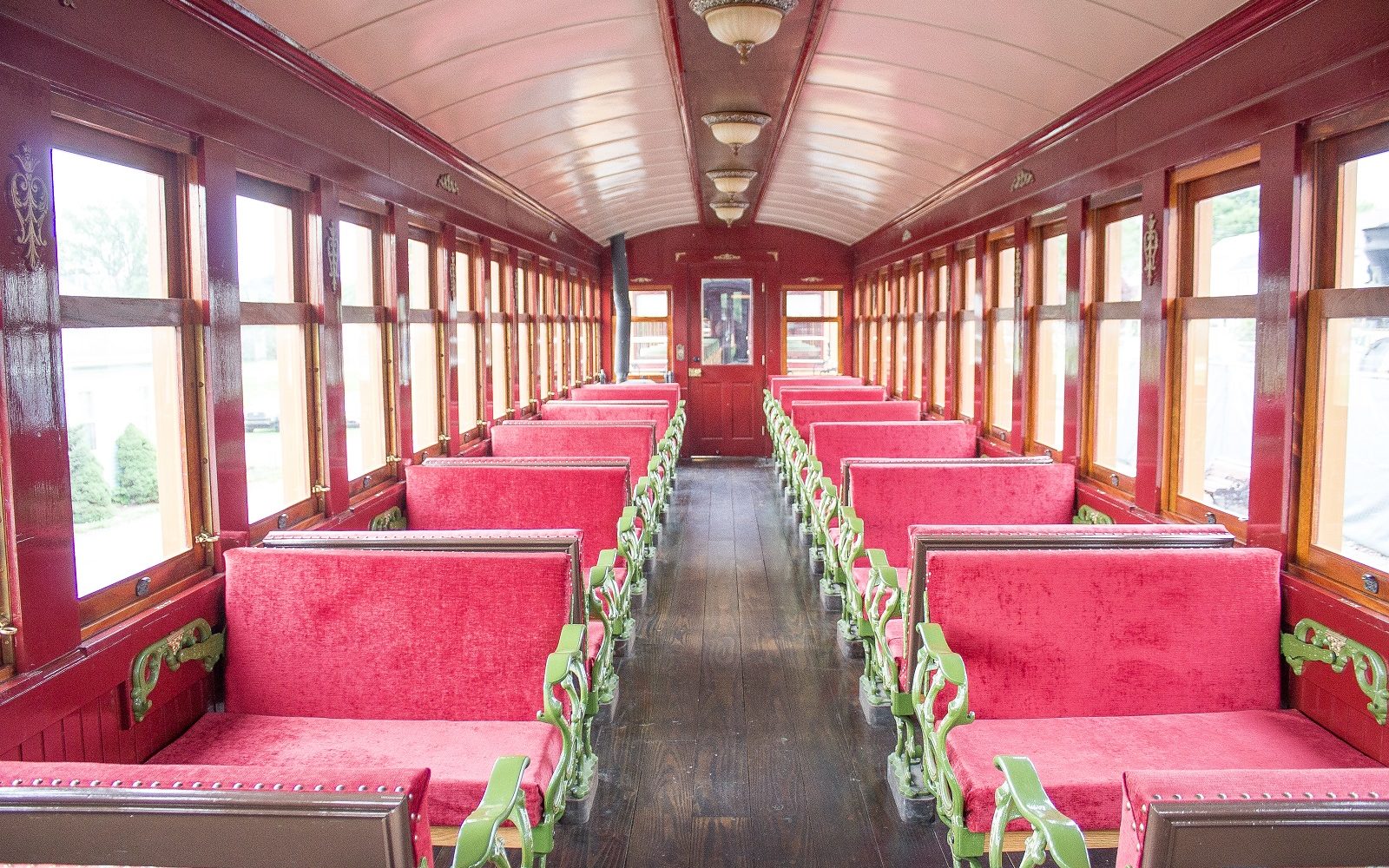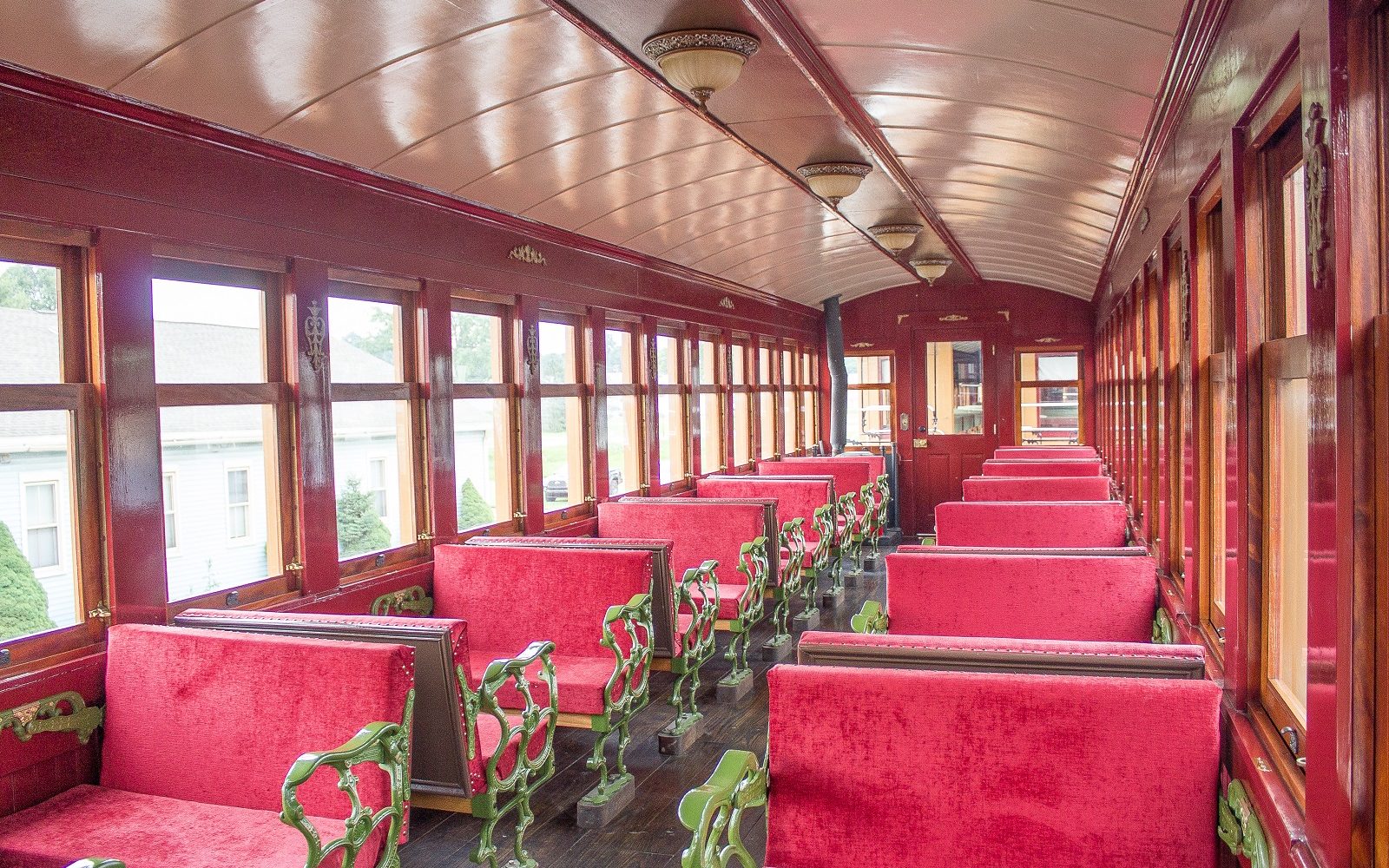Coach Accommodations
D. Reed Anderson
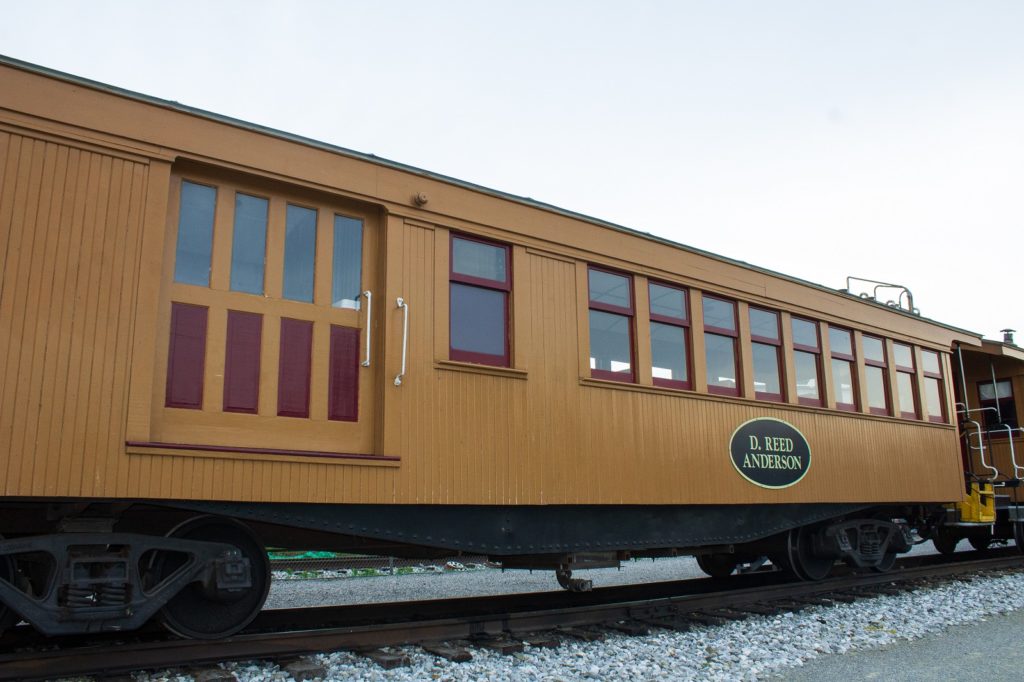
With a seating area for passengers as well as a storage area for baggage, the aptly-named combine car was important to railroads in the late nineteenth century. Our combine car, the D. Reed Anderson coach, holds special meaning as it is named for one of Northern Central Railway of York’s co-founders. Patterned after an 1880s-era combine car, this coach can seat up to 32 passengers and is available for public seating as well as small group private seating. When constructing this coach, special attention was paid to restoring 1920s-vintage Hale and Kilburn cushioned walkover seats, which can be reversed to face the direction of travel. The D. Reed Anderson houses two restrooms and is handicapped accessible. Like our other passenger cars, this coach features coal stoves and operable windows for all-season use.
Abraham Lincoln
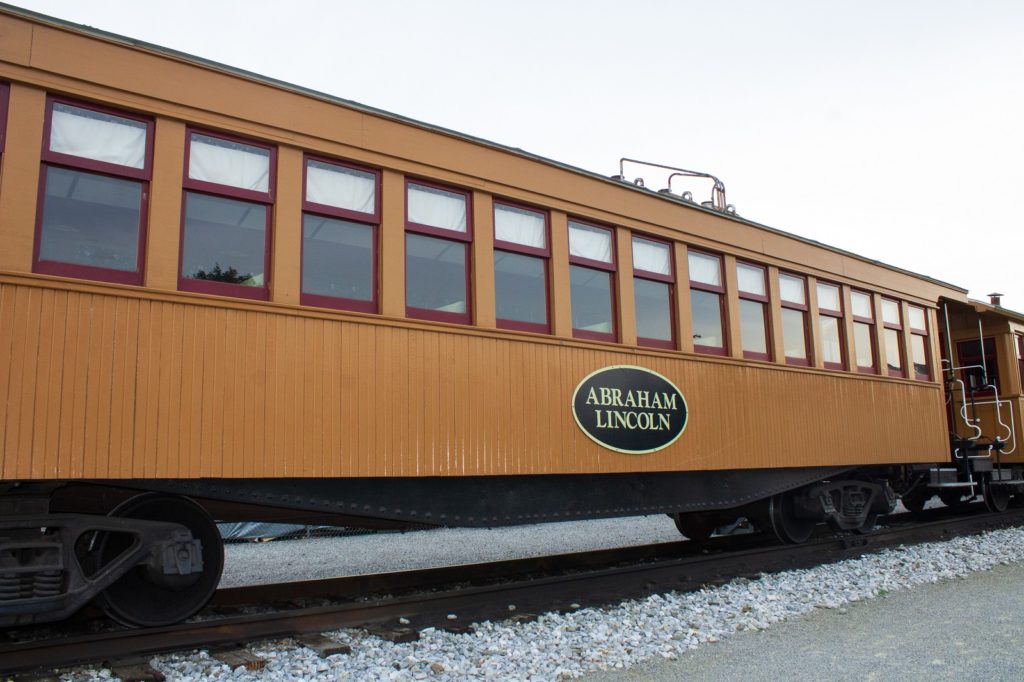
The Northern Central Railway will forever be connected with President Abraham Lincoln, who rode these rails to and from delivering the Gettysburg Address in 1863. Sadly, less than two years later, on April 21, 1865, the nine-car Lincoln Funeral Train would use these tracks when traveling from Baltimore to Harrisburg and beyond. Our Abraham Lincoln car incorporates the look and feel of an 1870s passenger coach. The vibrant car embraces Victorian motifs and features plush green seats that can be reversed to face the direction of travel. Like our other passenger cars, the Abraham Lincoln coach incorporates authentic nineteenth century heating via coal stoves as well as operable windows to bring the outside in and provide fresh, cool air.
New Freedom
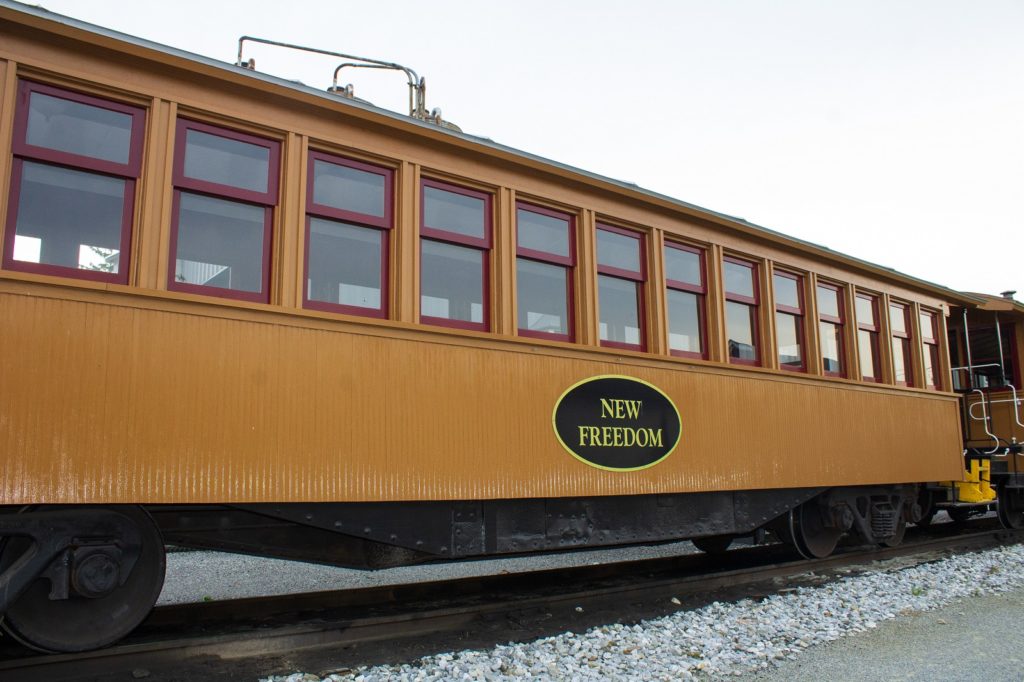
Named for the home base for the Northern Central Railway of York, the New Freedom replicates the appearance of a standard passenger coach from the 1860s. In true Victoria Era fashion, the lavish car features a colorful interior, with plush red seats that can be reversed to face the direction of travel. With seating for up to 56 passengers, the New Freedom coach incorporates authentic 19th century heating and cooling – coal stoves to heat the car during the cold months and open windows to cool the car during the warm season. As for the car’s namesake, New Freedom was incorporated in 1873 and named for the Free family. The borough houses both our engine house as well as our passenger station – the historic New Freedom Railroad Station, which is listed on the National Register of Historic Places.
South Branch
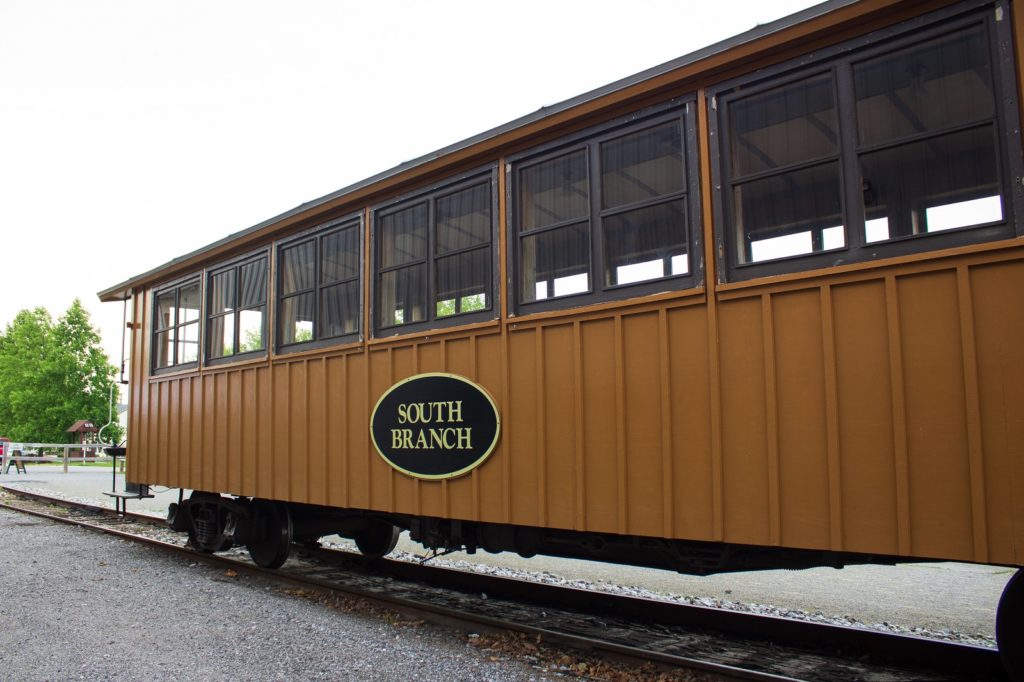
The tracks of the Northern Central Railway wind through the rolling hills and peaceful valleys of southern York County, paralleling and occasionally crossing the South Branch of the Codorus Creek. South Branch also happens to be the name of our 1860s-era open-air coach, which offers a unique riding experience. With seating for up to 36 passengers, the layout of the coach features cushioned seats in the center of the car, facing outward on each side to provide spectacular views of quaint towns and picturesque countryside. During the warmer months, the large windows are open to allow refreshing airflow, while in the colder months the windows are closed to retain the warmth courtesy of an era-appropriate coal stove. Wicker chairs provide additional seating options for passengers.
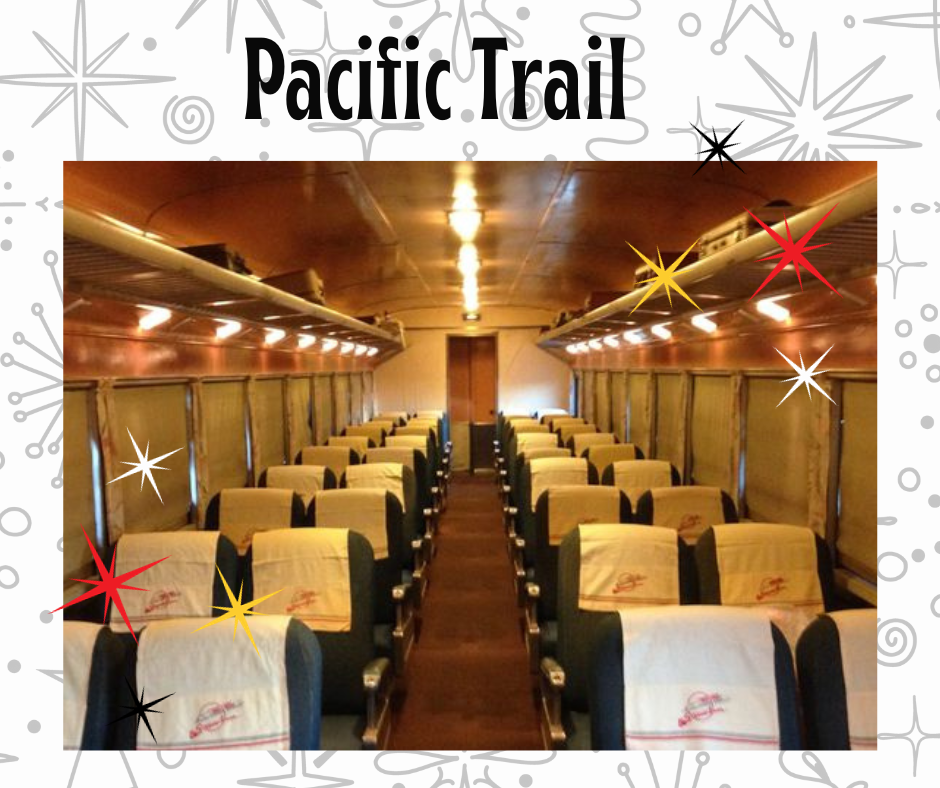
The Pacific Trail was built by the Pullman Standard Car Manufacturing Company. It was delivered to Union Pacific Railroad in 1950 and was eventually sold to Amtrak. The 44-seat chair car was used for second-class travel and features plenty of legroom and restrooms. The Pacific Trail was purchased by Bill Hatrick in 1983.
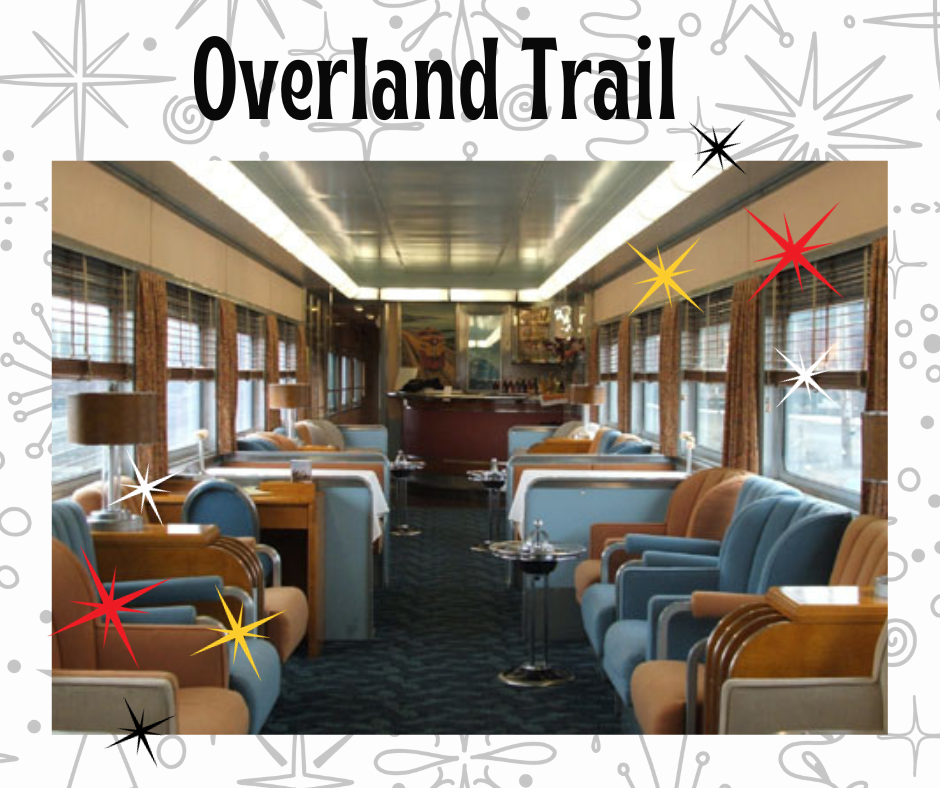
The Overland Trail was built by the Pullman Standard Car Manufacturing Company in 1949. The 39-seat club-lounge car was originally owned by Southern Pacific Railroad and then Amtrak. It features a Streamline Moderne design, a quarter-circle bar, and a barbershop. The Overland Trail has been in the care of Bill Hatrick since 1987.
